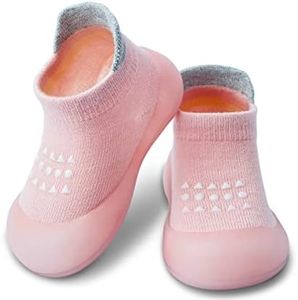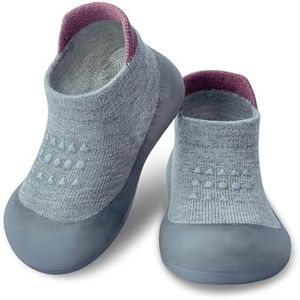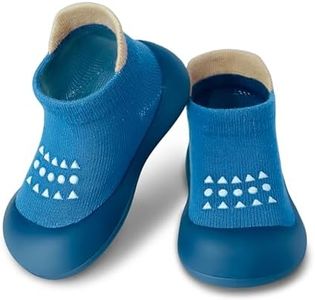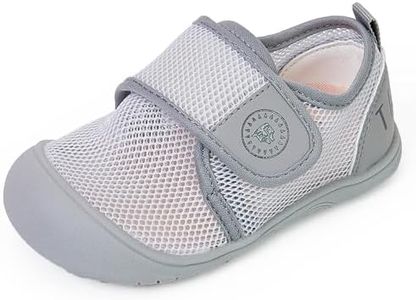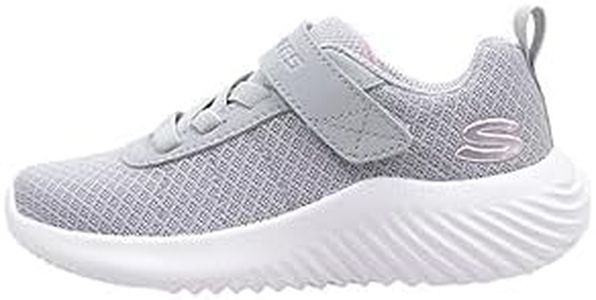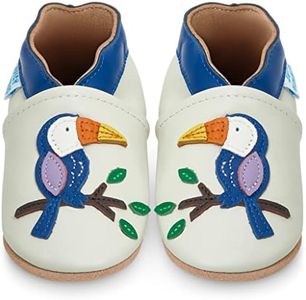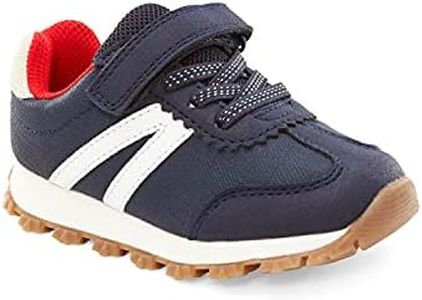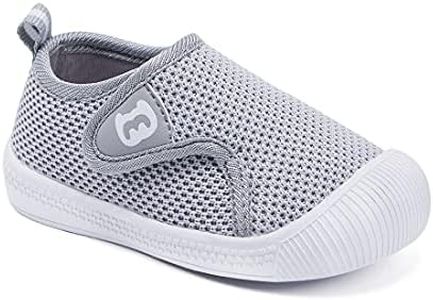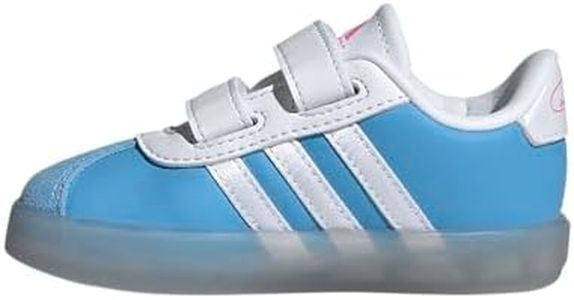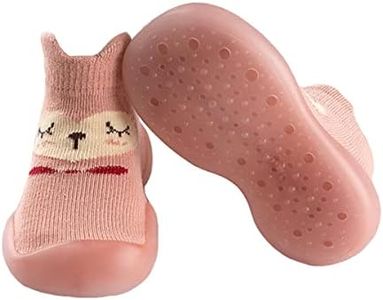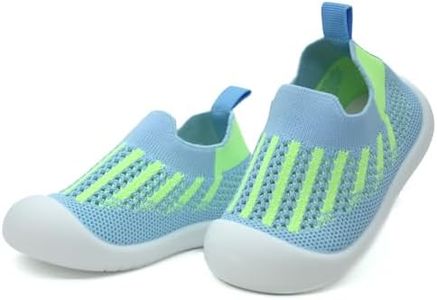We Use CookiesWe use cookies to enhance the security, performance,
functionality and for analytical and promotional activities. By continuing to browse this site you
are agreeing to our privacy policy
10 Best Baby Walking Shoes
From leading brands and best sellers available on the web.Buying Guide for the Best Baby Walking Shoes
Choosing the right pair of baby walking shoes is an important step as your child begins to explore the world on their feet. The best walking shoes for babies provide support, comfort, and protection, helping their feet develop naturally and safely. Since babies' feet are still growing and changing, it’s important not to rush into stiff or heavy shoes that might restrict movement. Instead, focus on shoes that let your baby’s feet move freely, encourage balance, and offer just enough protection from the environment.Sole FlexibilityThe sole refers to the bottom part of the shoe that comes in direct contact with the ground. Flexibility in the sole is vital because it allows your baby's feet to move and develop muscles naturally. Stiff soles can hinder balance and foot development, while overly thin soles might not offer sufficient protection. Look for shoes that bend easily when you press the toe upward. If your baby is just starting to walk, a more flexible sole that mimics walking barefoot is best. For more experienced walkers, a slightly firmer sole with some grip can provide added protection and stability as they explore more varied surfaces.
Material and BreathabilityMaterials used in baby walking shoes should be soft, breathable, and gentle on sensitive skin. Breathable fabrics like mesh or soft leather help keep your baby's feet cool and dry, reducing the risk of irritation or sweating. Synthetic materials may be less breathable and can trap heat. If your baby tends to get hot or is active, prioritize shoes made from natural, breathable materials to ensure comfort during wear. Babies with sensitive skin or allergies will also benefit from shoes with hypoallergenic linings or natural fibers.
Fit and AdjustabilityProper fit is crucial for foot health and comfort, as tight shoes can impede growth and loose shoes can cause trips or falls. A well-fitting shoe should have enough room in the toe area for little toes to wiggle, a snug heel fit to prevent slipping, and an adjustable closure like Velcro, laces, or snaps for a secure, customizable fit. To choose the right fit, measure your baby's feet regularly and try shoes on at the end of the day when feet are slightly larger. Adjustability is great for growing feet or when your baby wears socks of different thicknesses.
Weight of the ShoeA lightweight shoe makes it easier for new walkers to lift their feet and move naturally. Heavier shoes can make walking awkward and discourage movement. When evaluating shoes, pick them up and compare weight; go for the lightest option that still offers enough protection for your child’s activities. For very young or hesitant walkers, keeping the shoe as light as possible ensures they won’t be slowed down as they learn to walk confidently.
Grip or TractionThe grip or traction at the bottom of the shoe helps prevent slips and falls as your baby starts to walk on different surfaces. Shoes with rubber or textured soles offer a good balance: they prevent sliding on smooth floors without being so sticky that they trip the baby. If your child mainly walks indoors, a simple soft sole with minimal texture might be enough, while outdoor adventurers need more pronounced patterns to handle dirt, grass, or playground equipment safely.
Toe ProtectionToe protection refers to the front part of the shoe and helps shield little toes from bumps and stubs. Some shoes have a reinforced or raised toe area that acts as a barrier against rough surfaces or small obstacles. This is particularly important if your baby walks outside or is very active. For indoor-only use or very cautious walkers, a softer toe area is fine, but for those who love to explore, opt for shoes with some extra protection in the front.
